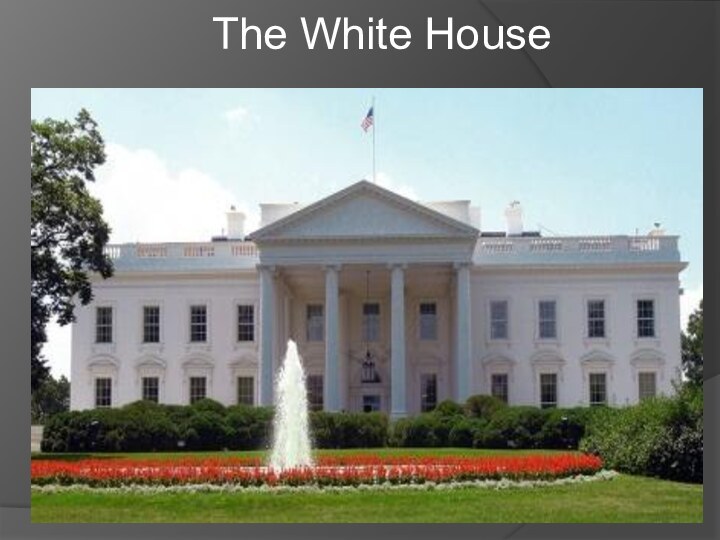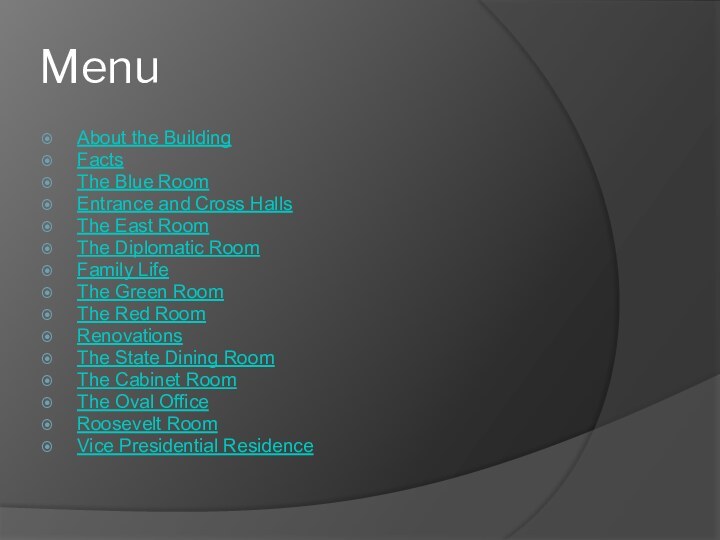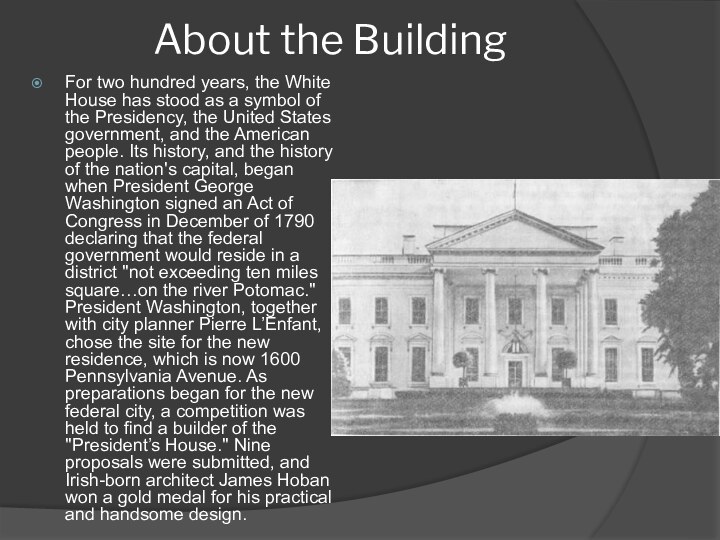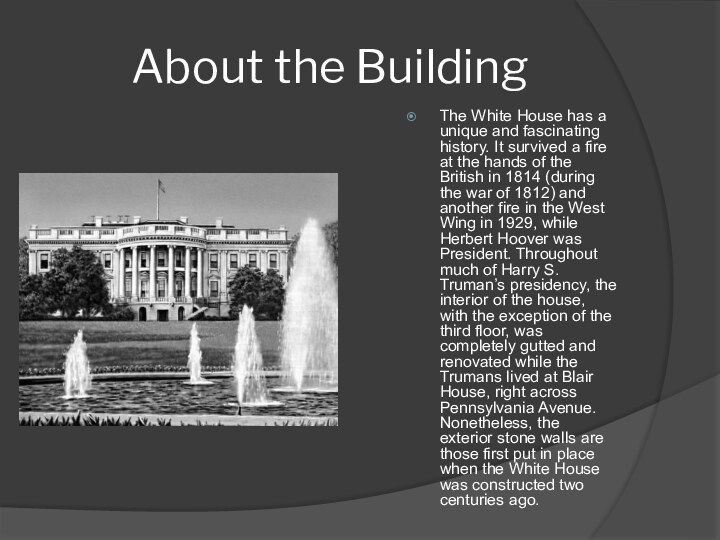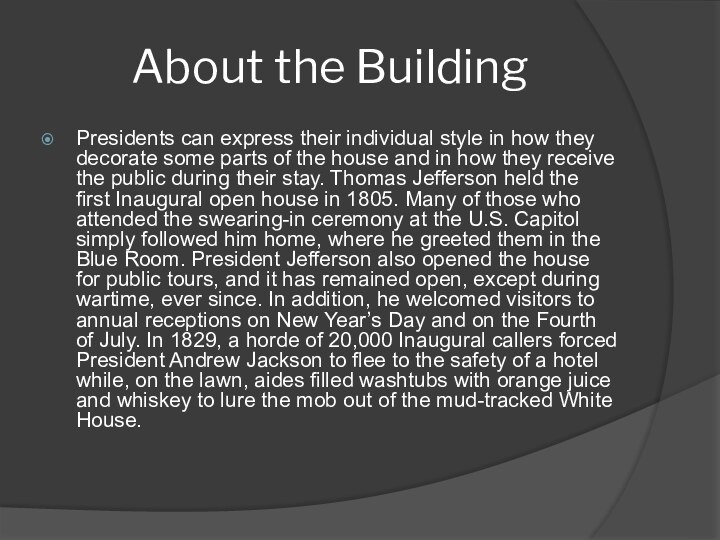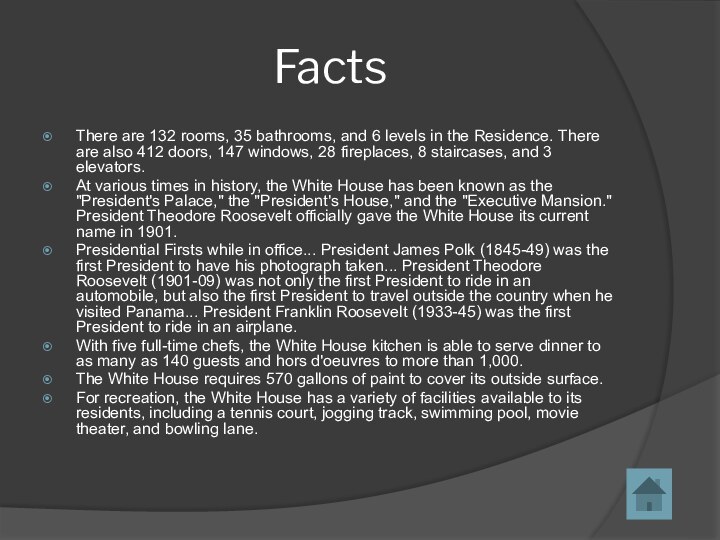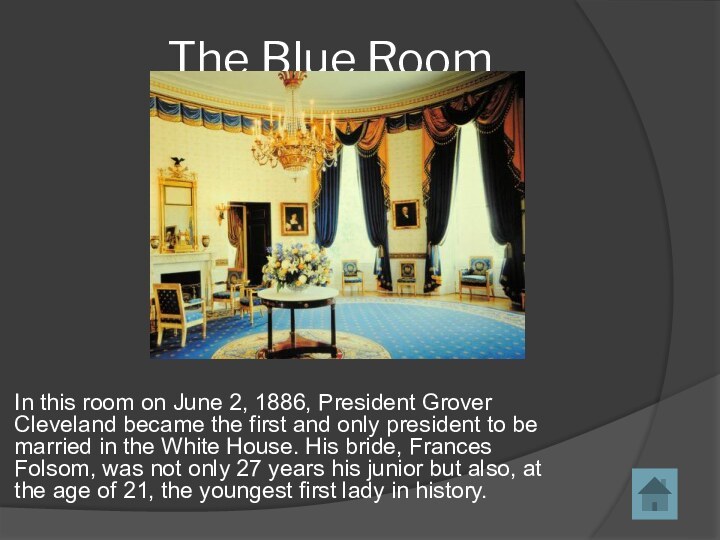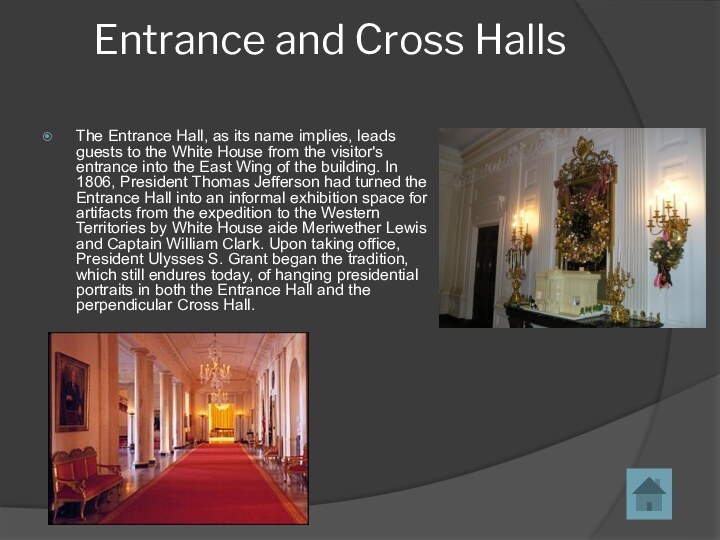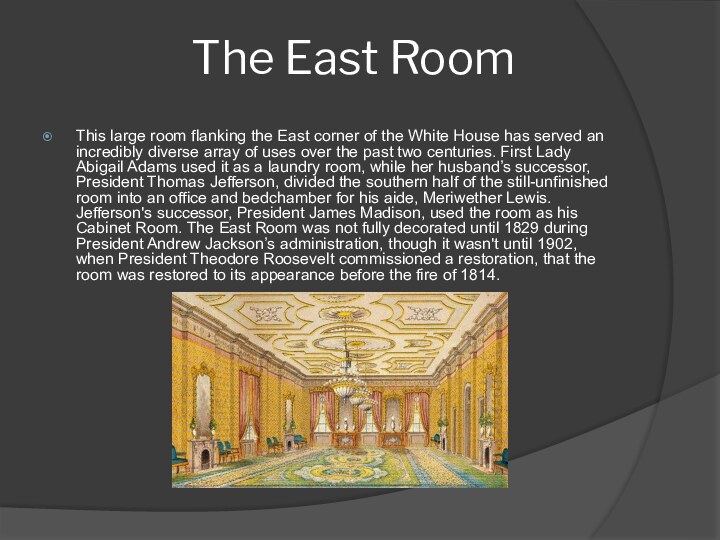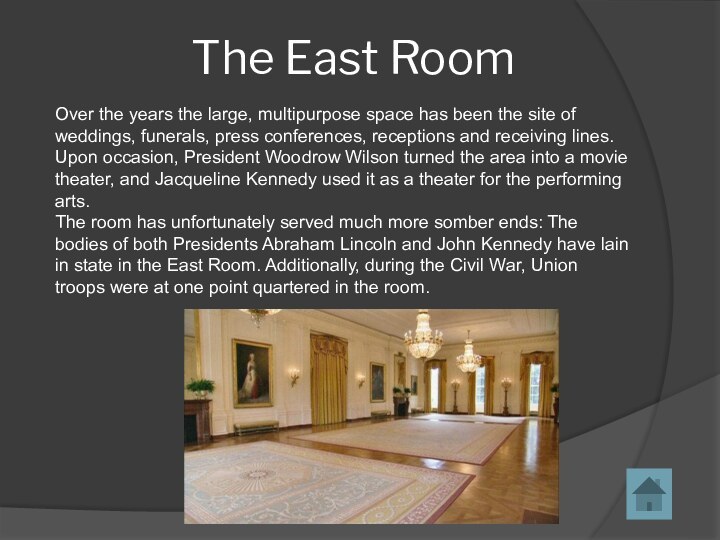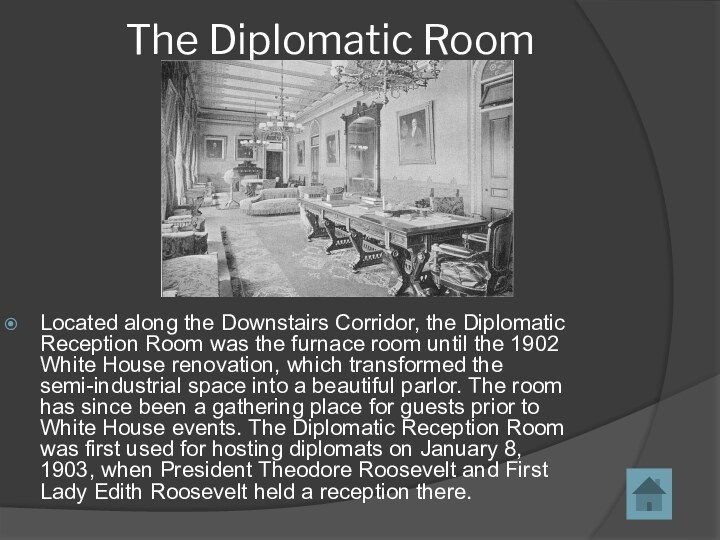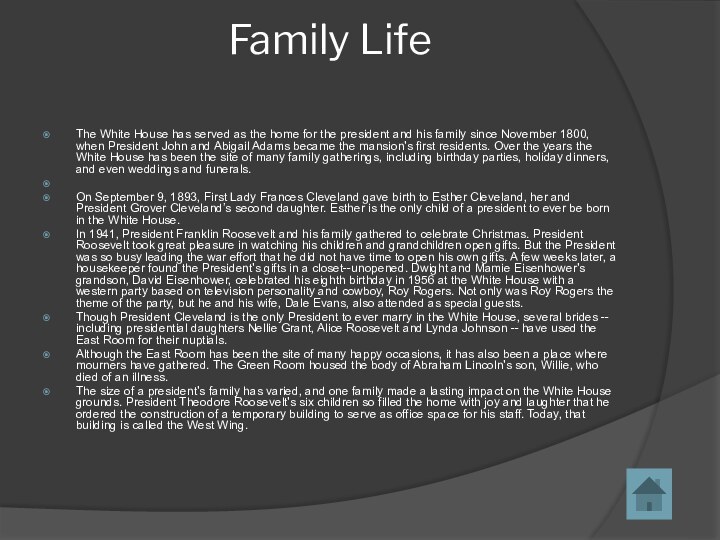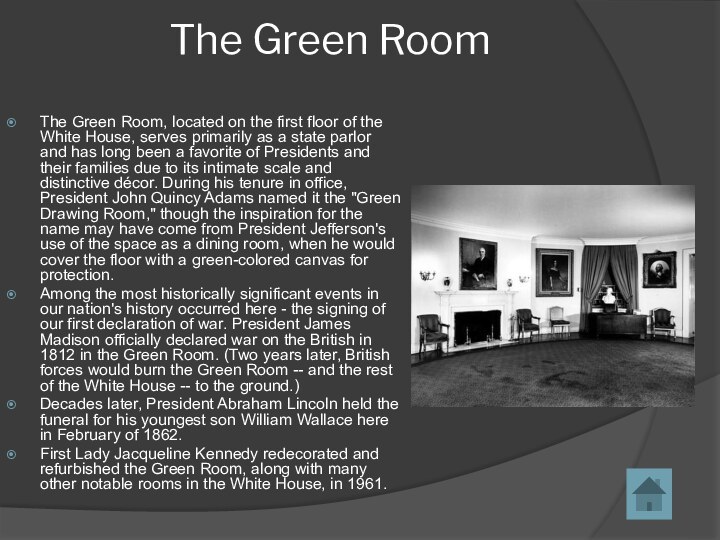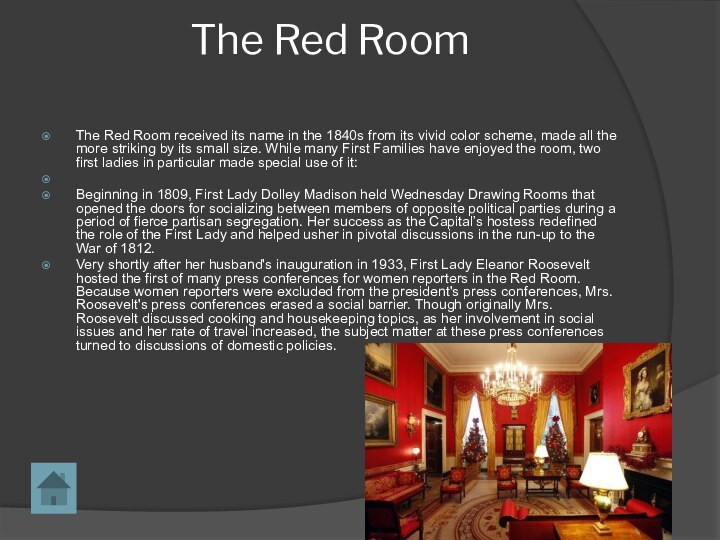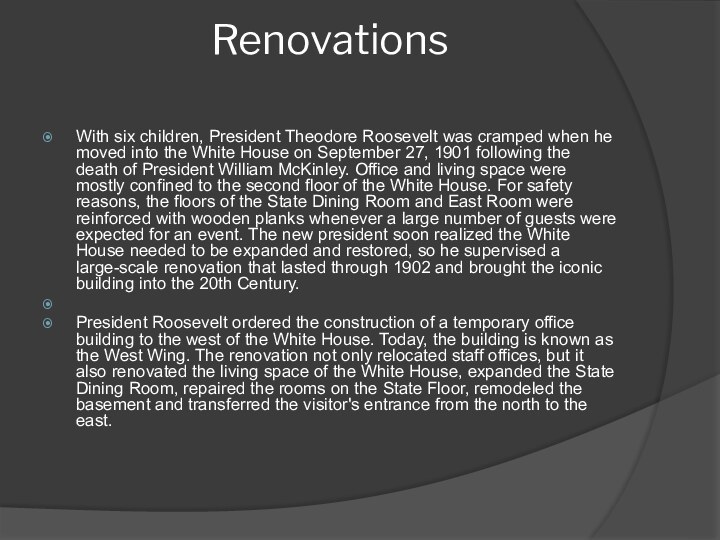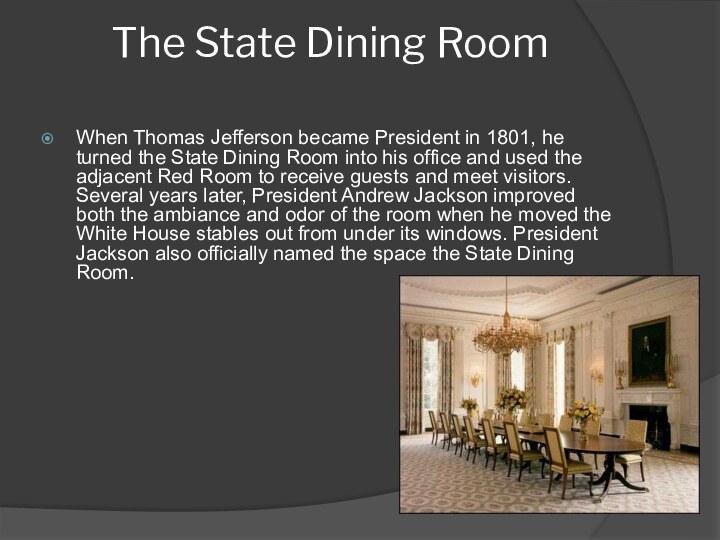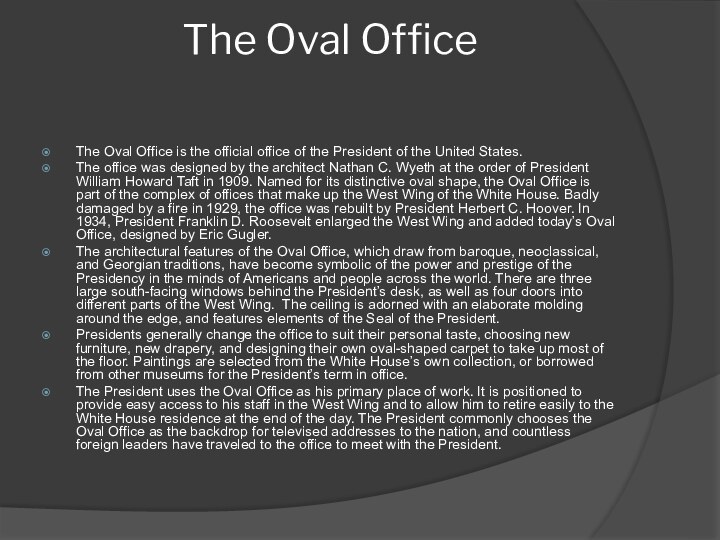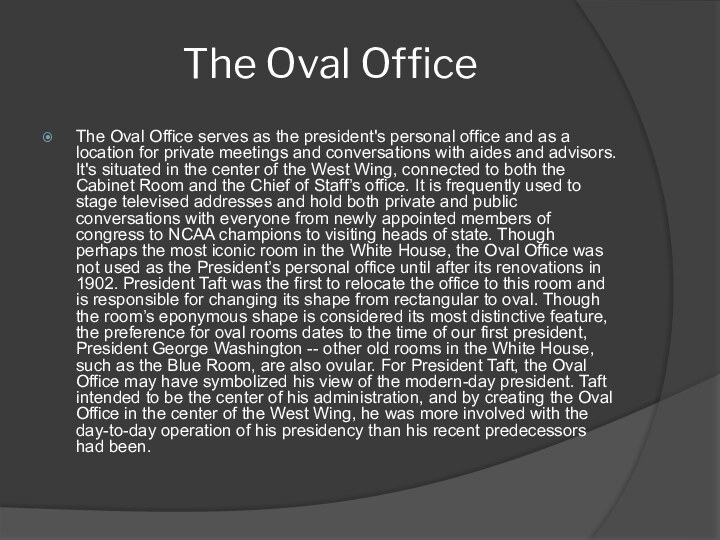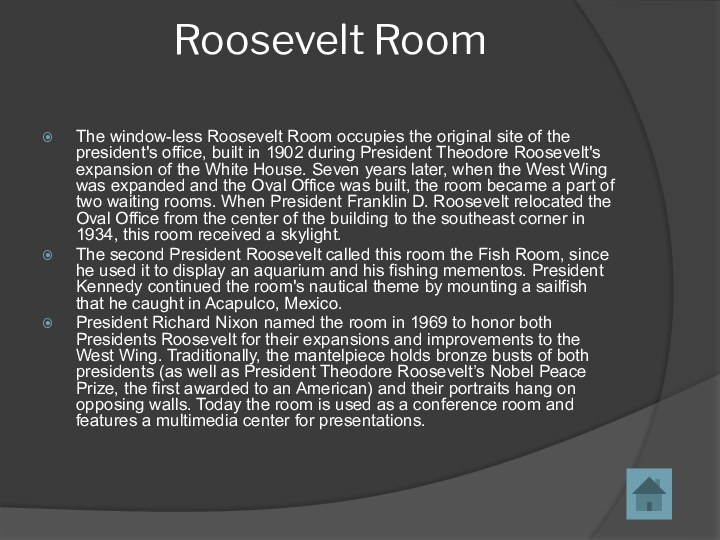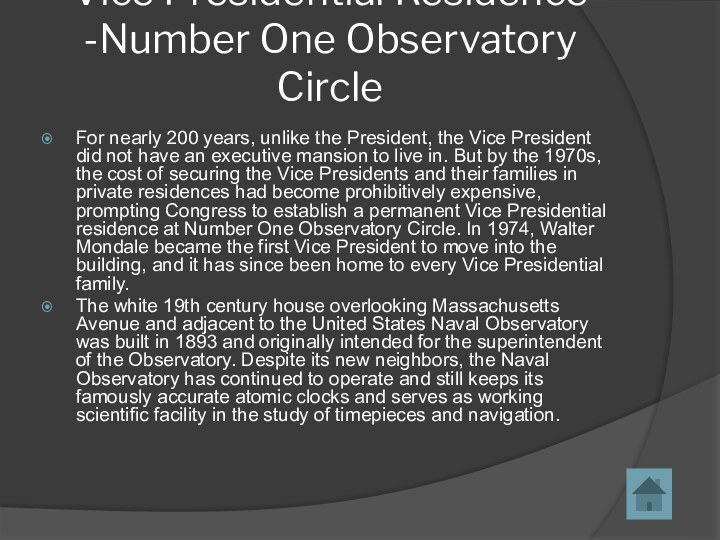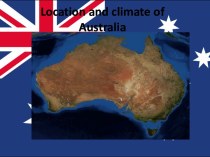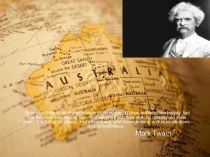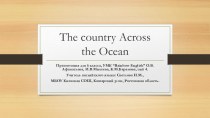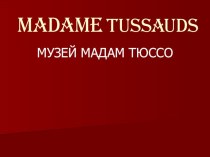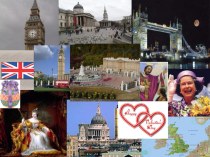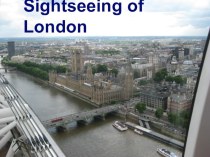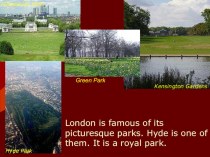home for the president and his family since November
1800, when President John and Abigail Adams became the mansion's first residents. Over the years the White House has been the site of many family gatherings, including birthday parties, holiday dinners, and even weddings and funerals.
On September 9, 1893, First Lady Frances Cleveland gave birth to Esther Cleveland, her and President Grover Cleveland’s second daughter. Esther is the only child of a president to ever be born in the White House.
In 1941, President Franklin Roosevelt and his family gathered to celebrate Christmas. President Roosevelt took great pleasure in watching his children and grandchildren open gifts. But the President was so busy leading the war effort that he did not have time to open his own gifts. A few weeks later, a housekeeper found the President's gifts in a closet--unopened. Dwight and Mamie Eisenhower's grandson, David Eisenhower, celebrated his eighth birthday in 1956 at the White House with a western party based on television personality and cowboy, Roy Rogers. Not only was Roy Rogers the theme of the party, but he and his wife, Dale Evans, also attended as special guests.
Though President Cleveland is the only President to ever marry in the White House, several brides -- including presidential daughters Nellie Grant, Alice Roosevelt and Lynda Johnson -- have used the East Room for their nuptials.
Although the East Room has been the site of many happy occasions, it has also been a place where mourners have gathered. The Green Room housed the body of Abraham Lincoln's son, Willie, who died of an illness.
The size of a president's family has varied, and one family made a lasting impact on the White House grounds. President Theodore Roosevelt's six children so filled the home with joy and laughter that he ordered the construction of a temporary building to serve as office space for his staff. Today, that building is called the West Wing.
